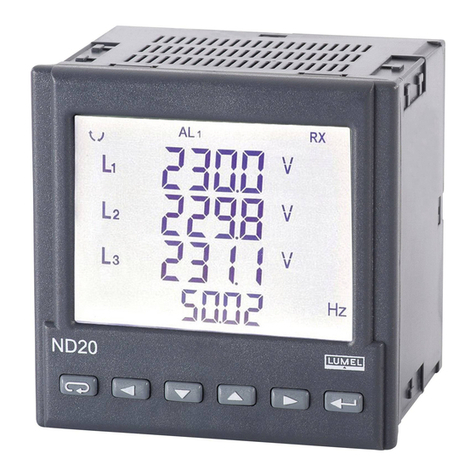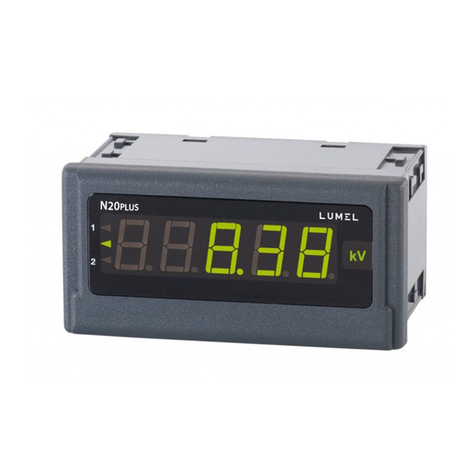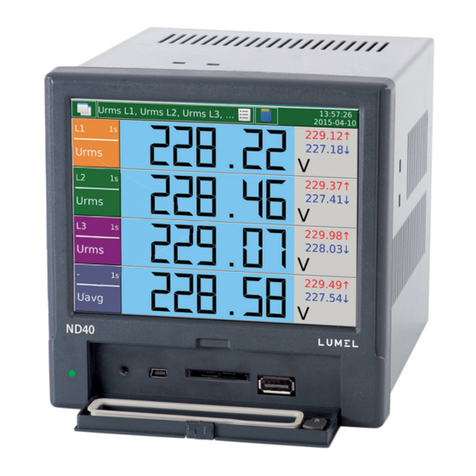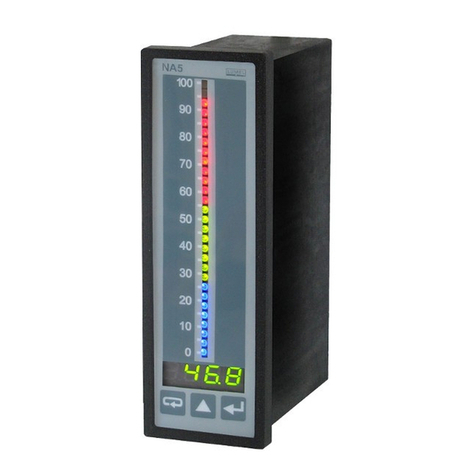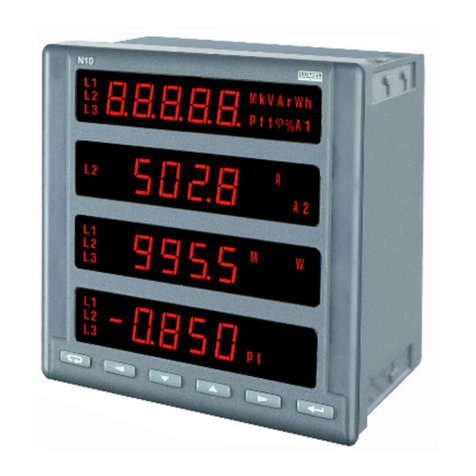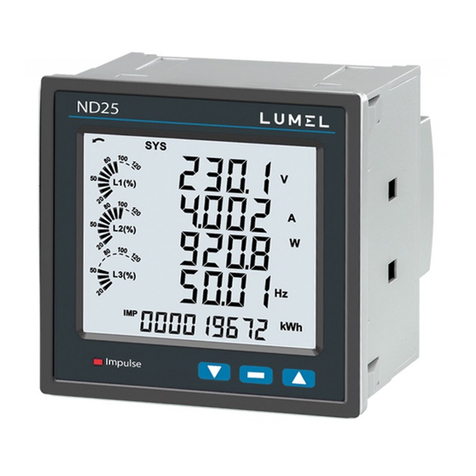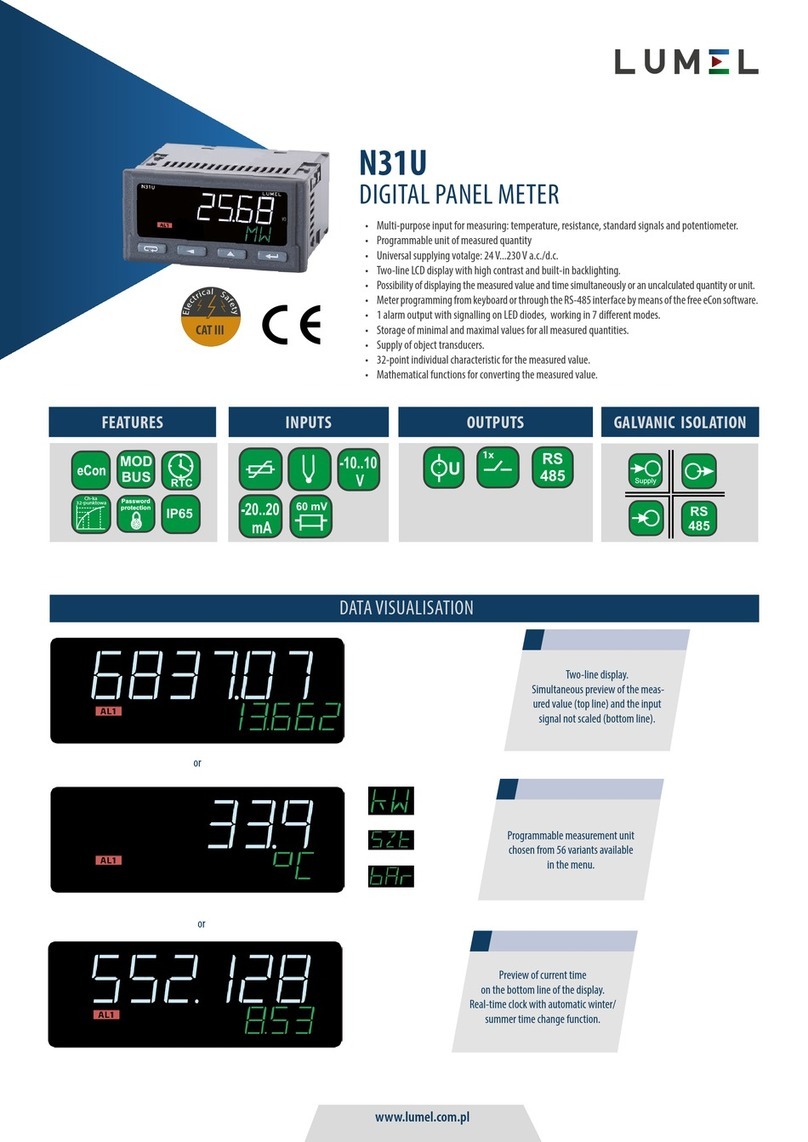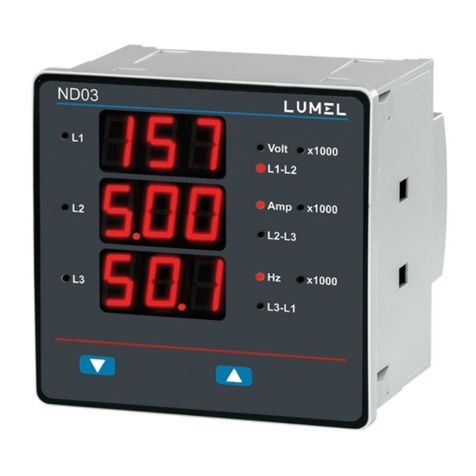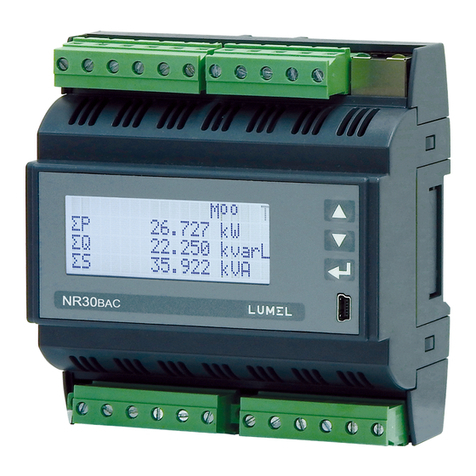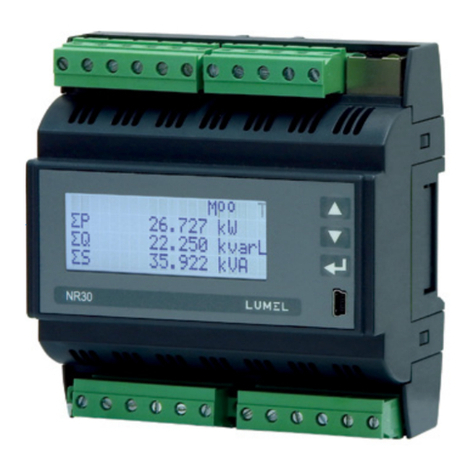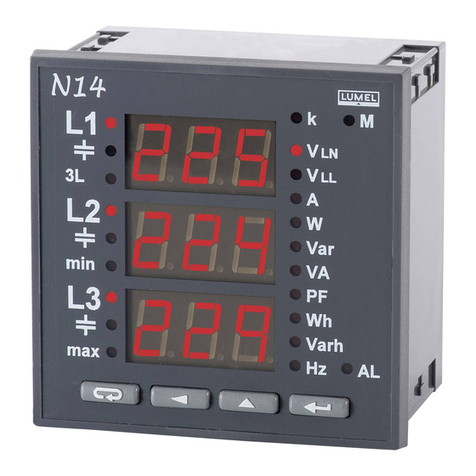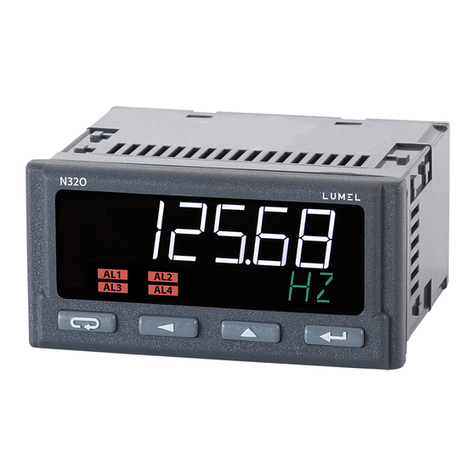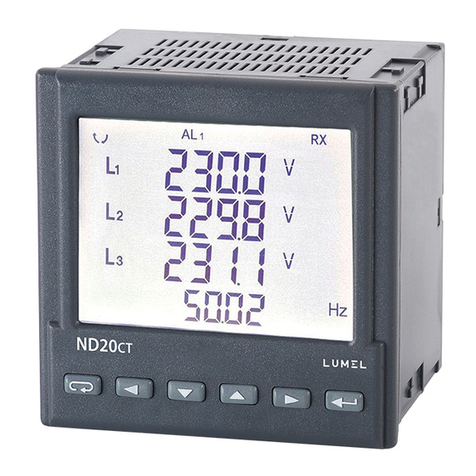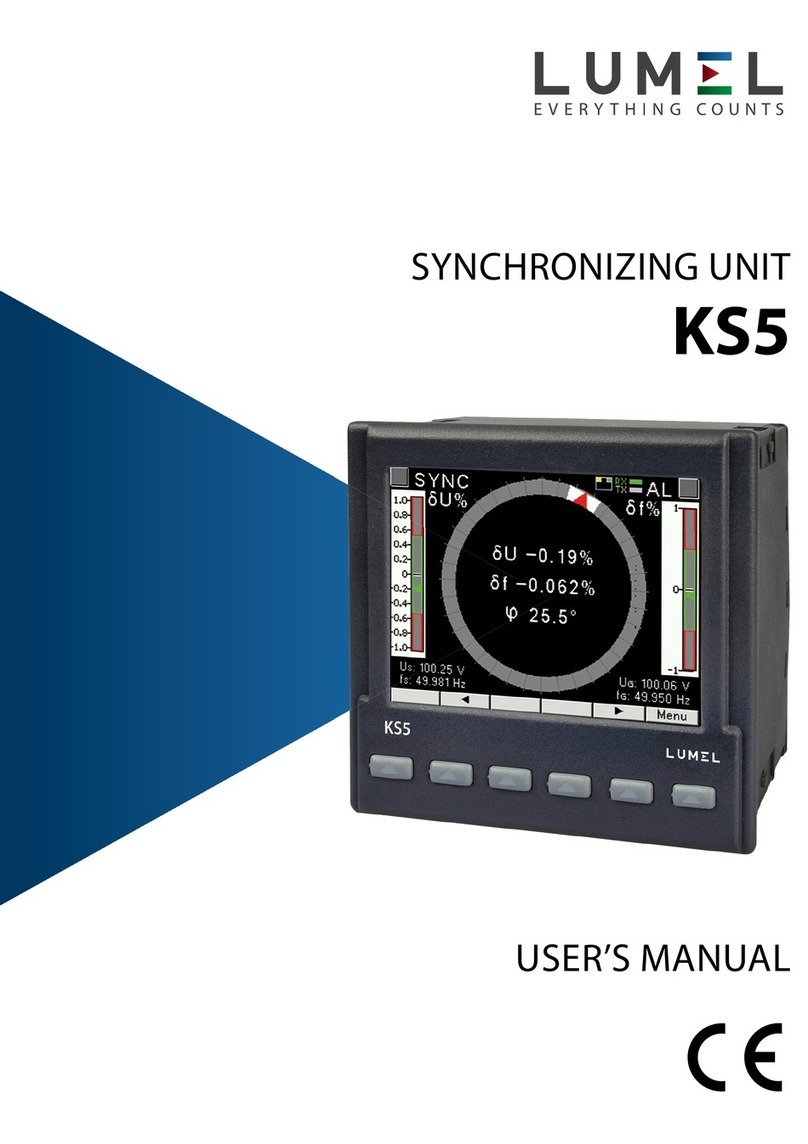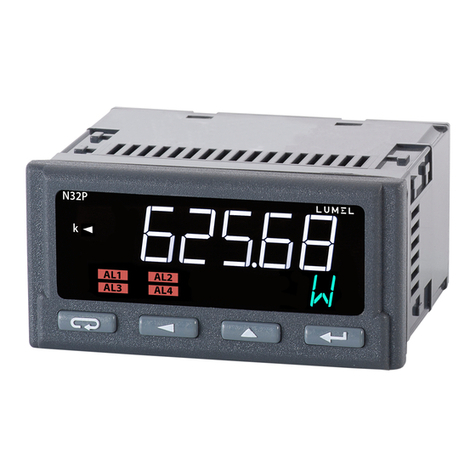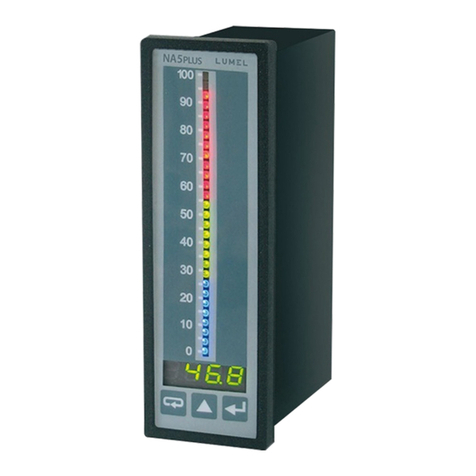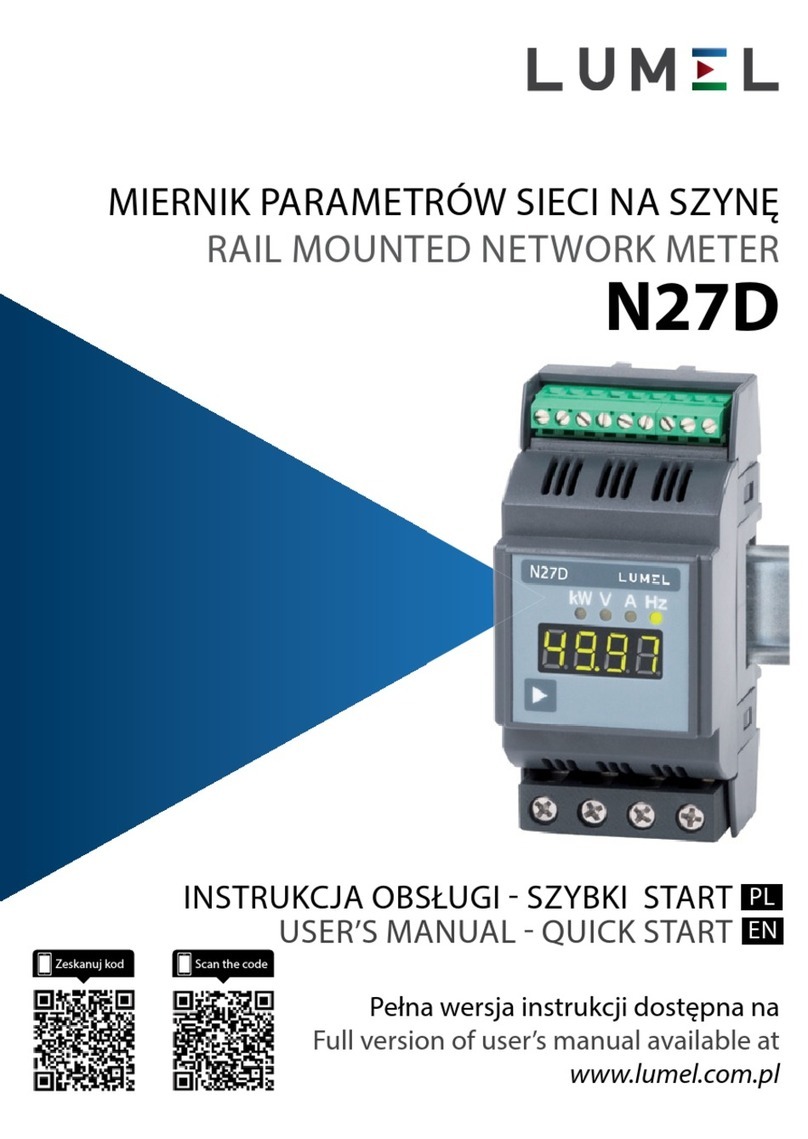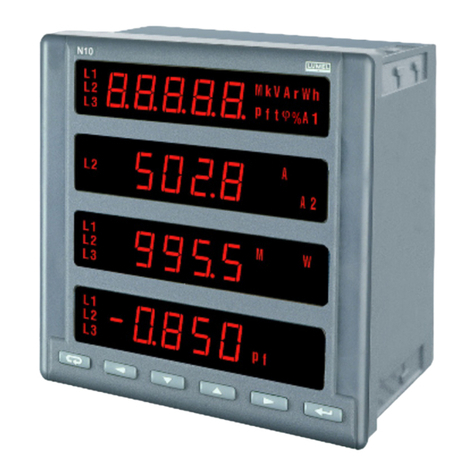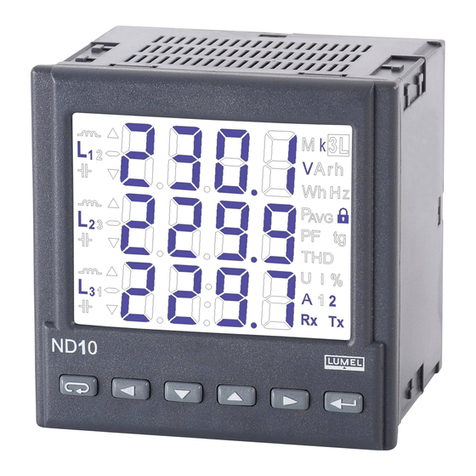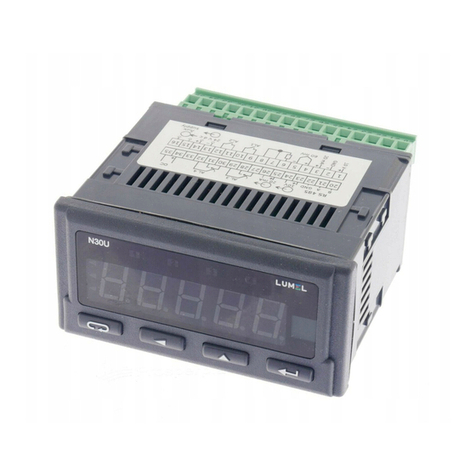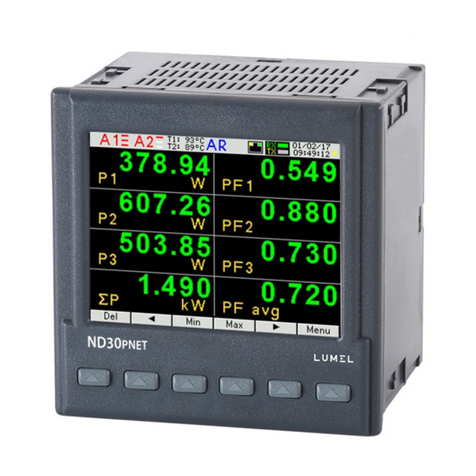3
1 APPLICATION
The ND10 meter is a digital programmable panel meter destined for the measurement of the 3-
phase, 4-wire power network parameters in balanced and unbalanced systems. It is also capable of
displaying measured quantities and their simultaneous digital transmission. The meter is also capable of
controlling and optimization of the power electronic devices, systems, and industrial installations.
The meter can be used for measuring: RMS value of voltage and current; active, reactive and apparent
power; active and reactive energy, power parameters; frequency, 15-, 30- and 60-minute mean active
power and THD. Additionally, a current in the neutral wire is calculated from the phase current vectors .
Voltage and current values are multiplied by given voltage and current ratios of measuring transformers.
Power and energy indications take into account all programmed ratio values. Any and all measured values
can be sent to the master via the RS-485 interface. The relay outputs signal alarm when selected
parameters exceed set limits. Impulse output can be used for consumption check of the 3-phase real
energy. This meter is also able to detect and signal incorrect phase sequence.
The meter is powered by the measuring circuit, i.e. from the voltage output.
There is a galvanic separation between following units of the meter:
- voltage and current inputs,
- RS-485 output,
- impulse output.
2 METER SET
Complete set of the meter includes:
- ND10 Meter 1 pcs.
- user's manual 1 pcs.
- warranty card 1 pcs.
- seal 1 pcs.
- panel mounting bracket 4 pcs.
3 BASIC REQUIREMENTS, OPERATIONAL SAFETY
ND10 Meter fully conforms with the requirements of EN 61010-1 standard.
Additional comments concerning safety:
•The meter should be installed and connected only by a qualified personnel. All relevant safety
measures should be observed during installation.
•Always check the connections before turning the meter on.
•Removal of the meter housing during the warranty period voids the warranty.
•This meter conforms to all requirements of the electromagnetic compatibility in the industrial
environment.
•Building power network should include switch or automatic circuit breaker positioned in the
convenient vicinity of the meter. It should be properly marked and available to operator at all times.
4 INSTALLATION
ND10 Meter is adapted to be mounted to the panel with mounting brackets (see Fig. 1). Meter housing
is made of plastic.
Housing dimensions: 96 x 96 x 77 mm. On the outer side of the meter there are screw and tab terminal
strips that can be used for connecting external wires with diameter up to 2.5 mm2.
Prior to installation a 92,5+0.6 x 92,5+0.6 mm slot must be made in the panel. The thickness of the panel
material should not exceed 15 mm. The meter must be placed in the panel from the front. During
installation the powering voltage must be off. When the panel is inserted in the slot, mount it in place with
provided mounting brackets.












